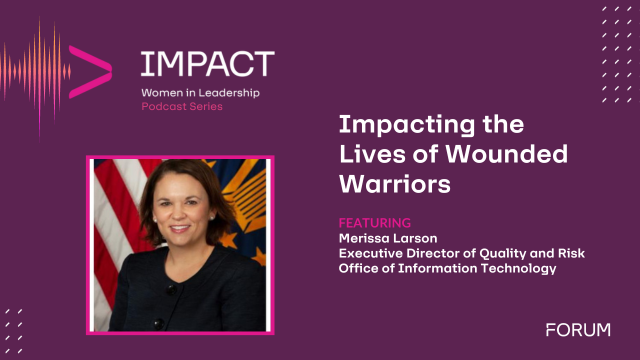By Milad Bahrami
The Federal Government, and in particular the Department of Health and Human Services, is focused on modernizing its legacy systems. IT modernization offers a way for HHS agencies to improve service delivery while controlling costs. This enables greater agility, scalability, and efficiency in operations to meet evolving mission needs by modernizing legacy IT infrastructure, processes, and systems. As digital modernization continues to gain focus, so does the use of low-code platforms. Here are some of the reasons low-code platforms are on the top of the list of most CIOs when evaluating how and whether to modernize their legacy systems, some misconceptions we need to move past, and some advice for Government and industry moving into 2022.
Development Time
At its most basic level, low-code is an approach to application development that leverages platform-based visual design elements — such as drop-down menus, checkboxes, data models and integration — to quickly and easily develop, change, and deliver business applications with minimal to no hand coding. The ability to use visual design elements allows for business and IT to work together to design an application without having to go back and forth and risk losing what business wants in that process. In addition, coding standards are built into the platform and enforced during development to reduce errors. Most low-code platforms also easily convert applications to be mobile-ready with a click of a button.
Integration
Low-code doesn’t just enable application development; it also simplifies integration of data and workflow into various platforms. The best lowcode strategy is one that integrates an organization’s content repositories with its line of business applications to maximize investments. The ease and speed of integration is significantly enhanced by using a low-code platform due to its use of graphical user interfaces as well as built-in APIs. Many low-code vendors also have established partnerships with more enhanced, API-focused software companies to further enable integration with iPaaS, ESB and a unified solution for API management, design, and publishing.
Leveraging Cloud
The value of low-code platforms has been accelerated with the move to the cloud. With the establishment of PaaS, teams can now rapidly deploy low-code applications to the cloud. Most of the leading low-code platforms offer FedRAMPcertified cloud environments in a fully managed cloud that provides the tools, environments, and operational support needed.
Misconceptions
People who steer away from low-code tend to do so based on misconceptions founded in history, not today’s reality. Among these is the concern over vendor lock-in, or an agency’s fear of being stuck within a specific platform. While that concern has validity from a historic view, today’s products have evolved to be more open to where data resides and how it interfaces with other systems. This openness means that fears over being trapped within legacy systems or within a restrictive proprietary platform are unfounded. Another belief — perhaps not a misconception but certainly a half-truth — is that it is easier to stay with what is known. This all comes down to change management and the understanding that the skillsets you have at your disposal are not necessarily those that will most benefit your efforts moving forward. Having come through a period where agencies may have struggled to secure staff with the skills in whatever programming language was required at the time, there can be concern about having to go down that path again to secure new skills. The reality, though, is that the learning curve can be significantly less with a lot of the newer low-code options, to the extent that you don’t need someone with a computer science degree to be able to see success. Low-code can support many basic tasks that even a business analyst can drive, and that can be a huge value add.
Getting Started: Advice for Government
The notion that it is easier to stay the course than to change is fair, but that is not how Government advances. There needs to be forward motion in how we view things and how we develop things for Government to continue to succeed in its missions. At the same time, this movement must be done in a way that makes sense and remains risk-averse. One of the easiest ways to identify opportunities is to look at other agencies within the Federal space who may be addressing similar functions. Find those use cases that demonstrate success on mission-critical applications, and you have a starting point for moving your own agency forward. By taking a holistic look at your needs and the capabilities available across Government, it becomes easier to achieve the win you need to move forward.
Many low-code options have cloud-based trial versions so you can see what might be done. Vendors will also provide training that can give you an idea of what might align with what you need to accomplish.
Advice for Industry
While there are some examples of interagency collaboration, the role of industry can be to serve as that bridge. Industry has the opportunity to be an extremely powerful partner to Government by identifying successes within one agency, framing those successes to meet the needs or challenges of another, and then connecting those two sides for dialogue. Where vendors, integrators, or other industry partners can bridge those gaps, we open the door between two sides who speak a common language and who serve similar missions under similar restrictions. That shared language can make it easier for one side to really understand the success of the other and truly understand the opportunity they have at their disposal.
That same kind of communication and bridge building must also happen within industry. Have the conversations, set the models that show how open a product is, how extensible it is to work with — including within the parameters of various organizations — and you increase the exposure, the understanding, and the usability of your low-code products.
The Citizen Developer
We have gone through many of the benefits of why low-code platforms should be a critical part of any digital transformation strategy, but it would be remiss to not address the value of the citizen developer. A citizen developer is someone who deeply understands the business problem and how to design the desired solution but doesn’t have the experience in code development. With low-code platforms, these individuals are enabled to build solutions themselves, which also frees up technical developers to work on more complex applications. Particularly within the Federal health space, priorities are dynamic and ever-changing. The ability to make change more quickly and more easily, supported by the interfaces lowcode products offer, allows Government greater capacity to respond to changing policy and legislative changes and to the demands created by crises such as the COVID-19 pandemic.
About Milad Bahrami
 Milad Bahrami is a seasoned Federal IT industry expert with over 20 years of experience in the public and private sectors of the Federal Government. He currently serves as the Senior Vice President of the Government Health & Safety Solutions operation within the Leidos Health Group where he is responsible for leading a team of 2000 health IT professionals providing solutions and services to the Department of Health and Human Services (HHS), Social Security Administration, and a life sciences portfolio that spans across multiple Federal health agencies. His focus areas include Healthcare IT, advanced data analytics, life sciences, call and data center operations, and IT modernization.
Milad Bahrami is a seasoned Federal IT industry expert with over 20 years of experience in the public and private sectors of the Federal Government. He currently serves as the Senior Vice President of the Government Health & Safety Solutions operation within the Leidos Health Group where he is responsible for leading a team of 2000 health IT professionals providing solutions and services to the Department of Health and Human Services (HHS), Social Security Administration, and a life sciences portfolio that spans across multiple Federal health agencies. His focus areas include Healthcare IT, advanced data analytics, life sciences, call and data center operations, and IT modernization.
Milad holds a Master of Science degree in Engineering Management from Johns Hopkins University and a Bachelor of Science degree in Computer Information Systems from Purdue University. Mr. Bahrami is also a graduate of the Lockheed Martin Engineering Leadership Program and the GDIT Leadership Catalyst Program. Recently, Mr. Bahrami was appointed the Leidos executive sponsor for the NIH for the Children’s Inn.
Additional content from this year’s edition is available here.












